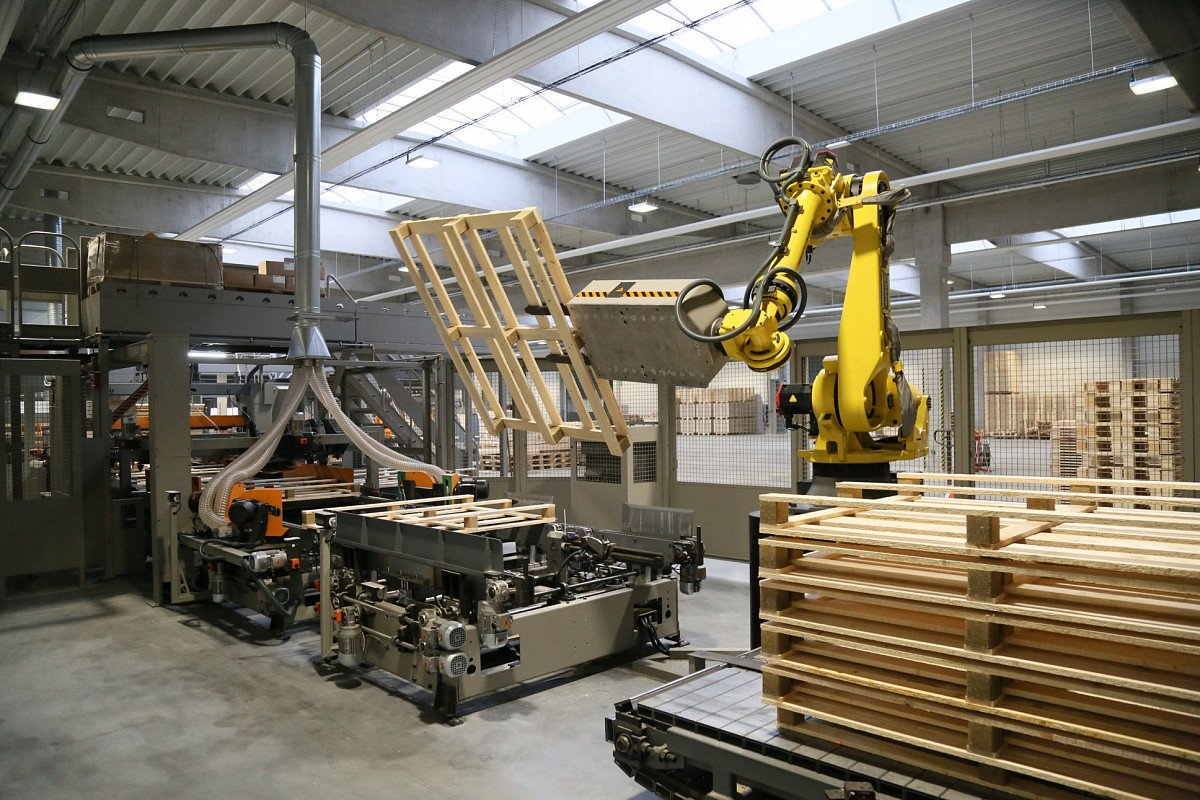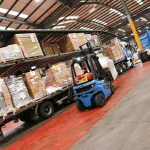
Tech Meets Timber: 5 Innovations in Heavy-Duty Pallets Transforming Kenya’s Warehousing
Introduction: The Evolution of Kenya’s Warehousing Sector
Kenya’s warehousing industry has been undergoing a massive transformation. Once dominated by basic storage units and manual handling systems, the sector is now at the forefront of technological change. As trade, logistics, and e-commerce continue to grow, the demand for efficient and sustainable warehousing solutions has never been higher. At the heart of this revolution lies an unlikely hero — the humble pallet.
Traditionally, pallets were simple wooden platforms used for stacking and transporting goods. However, in today’s fast-paced logistics environment, pallets have evolved far beyond their original purpose. They now embody innovation, sustainability, and technology — especially in Kenya, where the integration of smart systems and eco-friendly designs is redefining the future of warehousing.
The Growing Importance of Pallet Technology
Modern supply chains depend on precision, speed, and sustainability. Every second counts when moving products from factories to retail shelves, and pallets play a crucial role in ensuring efficiency. In Kenya, as logistics firms expand their operations to serve regional markets like Uganda, Tanzania, and Rwanda, pallet technology is becoming a strategic asset.
Tech-enabled pallets, especially those equipped with IoT sensors, offer real-time tracking, durability, and cost efficiency. These innovations are not just improving operations — they are reshaping how companies think about warehousing altogether.
From Traditional Wood to Smart Timber Solutions
For decades, wooden pallets dominated Kenyan warehouses. They were cheap, accessible, and easy to repair. However, the drawbacks — susceptibility to pests, moisture, and breakage — have prompted innovation. The modern approach combines traditional craftsmanship with cutting-edge technology, leading to smart timber pallets that can withstand harsh conditions while supporting sustainability goals.
By merging timber’s natural resilience with technological intelligence, Kenya’s warehousing is witnessing a transformation where nature meets innovation. These smart pallets aren’t just tools; they’re intelligent assets that enhance logistics precision and operational efficiency.
Innovation #1: Smart Pallet Tracking with IoT Integration
The first major innovation transforming Kenya’s warehousing industry is IoT-enabled pallet tracking. With the Internet of Things (IoT), companies can now embed small sensors into pallets to collect and transmit critical data. This innovation allows logistics managers to track the location, temperature, and movement of goods in real time — eliminating the guesswork that often causes delays and losses.
How IoT is Revolutionizing Supply Chain Visibility
IoT pallets bring unprecedented visibility across the supply chain. For instance, when goods move from Mombasa Port to Nairobi’s industrial area, sensors can send real-time updates on their condition and location. If a shipment encounters unexpected heat or humidity, alerts are triggered immediately, enabling quick responses to prevent product spoilage — especially for perishable goods like fruits, vegetables, and pharmaceuticals.
In a market where product integrity is vital, this level of visibility ensures accountability and efficiency. Businesses can pinpoint exactly where delays occur and optimize routes for faster, more cost-effective delivery.
Real-Time Data and Asset Management
IoT doesn’t just provide location tracking — it also enables predictive maintenance. Pallets equipped with smart sensors can report when they’re nearing structural fatigue or require replacement. This helps reduce waste, improve safety, and minimize downtime in busy warehouses.
Companies can also use data analytics from IoT systems to evaluate performance trends — for example, how often pallets are used, their load history, and damage patterns. Such insights help optimize pallet utilization and reduce operational costs over time.
Case Study: Kenyan Logistics Companies Leveraging IoT Pallets
Several Kenyan logistics firms are already adopting this technology. For example, Twiga Foods, which manages a vast fresh produce supply chain, has begun experimenting with IoT-enabled logistics to ensure freshness and traceability. Similarly, Sendy and DHL Kenya are piloting smart tracking systems to enhance customer transparency and asset control.
By leveraging IoT-integrated pallets, Kenya’s warehousing industry is not just improving efficiency — it’s building trust, accountability, and global competitiveness.
Innovation #2: Sustainable Timber and Eco-Friendly Materials
As the world shifts toward sustainability, Kenya’s warehousing industry is also embracing eco-friendly solutions — starting with pallets. Traditional wooden pallets often contribute to deforestation and waste, but modern sustainable timber pallets are changing that narrative.
The Rise of Sustainable Forestry in Kenya
Sustainable timber production has become a national priority, especially as Kenya’s Vision 2030 plan emphasizes environmental conservation. Today, certified timber suppliers ensure that pallet production doesn’t harm forests. By sourcing from responsibly managed plantations, pallet manufacturers can provide high-quality products without compromising Kenya’s natural heritage.
This approach has also spurred rural employment and local economic growth. Timber cooperatives and eco-certified wood producers are finding new markets in logistics and manufacturing sectors — further strengthening Kenya’s green economy.
How Green Pallets Are Reducing Carbon Footprints
Eco-friendly pallets reduce carbon emissions in multiple ways. Firstly, they’re made from renewable resources that can be replanted and regrown. Secondly, these pallets are biodegradable, which minimizes waste at the end of their lifecycle. Some innovators are even blending compressed sawdust and recycled plastics to make hybrid pallets — cutting down on virgin material use.
Warehousing companies adopting sustainable pallets also gain corporate social responsibility (CSR) advantages, appealing to global partners who prioritize green logistics. With sustainability reporting becoming the norm, eco-friendly pallets offer both environmental and branding benefits.
Comparing Recycled Plastic vs. Timber Pallets in Environmental Impact
| Feature | Recycled Plastic Pallets | Sustainable Timber Pallets |
|---|---|---|
| Durability | High | Moderate to High |
| Carbon Footprint | Moderate (depends on production method) | Low (renewable source) |
| Recyclability | Excellent | Biodegradable |
| Cost | High initial, low maintenance | Lower cost, moderate maintenance |
| Eco Impact | Non-biodegradable waste risk | Fully biodegradable |
While recycled plastic pallets offer durability, sustainable timber pallets have the advantage of being biodegradable and locally sourced, making them a better fit for Kenya’s eco-conscious warehousing goals.
Innovation #3: Hybrid Pallet Design for Strength and Longevity
Kenya’s industrial and logistics sectors are demanding more durable pallet solutions capable of handling heavy loads, rough terrains, and variable weather conditions. Enter the hybrid pallet — a combination of metal reinforcement and treated timber that delivers exceptional strength and longevity.
Combining Metal Reinforcement with Timber Craftsmanship
Hybrid pallets integrate steel frames or aluminum supports within timber structures to create a strong yet lightweight platform. This blend leverages the shock-absorbing quality of wood and the structural stability of metal, ensuring that even the heaviest machinery parts, beverages, or construction materials can be safely stored and transported.
These pallets are particularly suited for industries such as manufacturing, construction, and logistics hubs across Nairobi, Kisumu, and Mombasa, where rugged handling conditions are common.
How Hybrid Pallets Outperform Traditional Wooden Pallets
Unlike ordinary wooden pallets, hybrids can withstand more weight, resist warping, and last longer — up to three times the lifespan of standard designs. They also require fewer repairs, making them cost-effective in the long run.
Moreover, hybrid pallets are designed to fit seamlessly with automated handling equipment, a crucial factor as Kenya’s warehouses increasingly adopt robotics and conveyor systems.
Maintenance, Cost, and Lifecycle Benefits
While hybrid pallets may have a higher initial cost, their extended lifespan and minimal maintenance requirements make them a wise investment. They resist termite attacks, rot, and corrosion, significantly reducing long-term costs.
Over a 10-year period, companies using hybrid pallets report up to 40% savings compared to those using conventional wooden versions. Their design flexibility also allows for custom load capacities, ensuring suitability for diverse industries.
Innovation #4: Automation-Ready Pallets for Modern Warehouses
Automation is no longer a futuristic dream — it’s a present-day reality in Kenya’s fast-growing warehousing and logistics sectors. As companies adopt robotic forklifts, automated conveyors, and AI-driven sorting systems, pallet design has had to evolve to keep pace. The result? Automation-ready pallets — engineered to seamlessly integrate with machines while maintaining strength, precision, and reliability.
The Role of Robotics and AI in Pallet Handling
In automated warehouses, every detail matters. From the spacing between pallet slats to the uniformity of dimensions, precision determines how efficiently robots and machines can handle loads. Automation-ready pallets are designed with consistent dimensions and reinforced edges, ensuring smooth interaction with robotic arms, conveyor rollers, and sensors.
AI technologies are also playing a big role. Some advanced systems use computer vision to detect and scan pallet barcodes, load dimensions, and even identify damaged pallets automatically. This allows warehouse management systems (WMS) to allocate resources efficiently, reduce manual handling, and minimize workplace accidents.
In Kenya, companies like Copia Global and Jumia are increasingly embracing automation in their distribution centers. These systems rely on pallets designed specifically to work with automated guided vehicles (AGVs) and robotic picking systems. Without uniform and durable pallets, automation wouldn’t function as efficiently.
Kenya’s Shift Toward Smart Warehousing Systems
Kenya’s warehousing landscape has evolved rapidly, especially around industrial parks in Athi River, Tatu City, and Naivasha. These facilities are investing heavily in smart logistics technologies that require pallets compatible with automated systems.
Automation-ready pallets also integrate RFID chips that allow easy tracking and coordination with warehouse software. When a pallet moves through an automated system, sensors detect it, update inventory automatically, and even trigger reordering processes for stock replenishment.
The outcome? Faster operations, fewer errors, and reduced costs. As more warehouses modernize, these intelligent pallet systems are set to become a standard requirement rather than a luxury.
How Pallet Design is Adapting to Automated Equipment
Traditional wooden pallets often vary in size and condition, which poses a challenge for automation. The new generation of pallets — made from treated timber or composite materials — ensures uniform size, smooth surfaces, and precision-cut joints.
Additionally, some manufacturers are experimenting with AI-assisted design models to predict stress points and optimize weight distribution. These design tweaks make the pallets lighter, stronger, and easier for robots to handle — all while maintaining compliance with global pallet standards like ISO 6780.
Automation-ready pallets are, therefore, not just products; they are smart interfaces between technology and logistics, driving efficiency in every corner of Kenya’s modern warehouses.
Innovation #5: Modular and Customizable Pallet Solutions
In Kenya’s dynamic economy, one size doesn’t fit all — especially when it comes to warehousing. Different industries require different pallet types, depending on the products they handle. This has led to the rise of modular and customizable pallet solutions, which allow companies to adapt pallets to their exact operational needs.
Tailoring Pallet Dimensions for Diverse Industries
From the tea plantations of Kericho to the automotive assembly plants in Nairobi, every sector has unique requirements. Modular pallets can be tailored in dimensions, weight capacities, and material types.
For instance, food processing firms prefer hygienic pallets made from treated timber or coated materials, while manufacturing sectors demand reinforced models capable of bearing heavy machinery parts.
Customization also extends to design — pallets can include detachable sections, foldable sides, and embedded RFID chips. These features make it easier to manage space, improve stacking efficiency, and streamline tracking during transport.
Flexible Design for Efficiency and Space Optimization
Warehousing costs are directly linked to space utilization. Modular pallets help companies make better use of their storage areas. For example, foldable pallets can be collapsed when empty, freeing up to 40% of space during return trips.
Furthermore, some Kenyan pallet makers now offer stackable and interlocking designs that ensure stability during transit, even on rough rural roads. These innovations not only save space but also reduce product damage and logistics costs.
Flexible designs also make it easier for companies to adjust their pallet configurations when they expand operations or switch to new product lines — eliminating the need for entirely new inventory systems.
How Custom Pallets Support Local Manufacturing Growth
Customizable pallet production has become a boon for local manufacturers. Small and medium enterprises (SMEs) can now order pallet designs suited to their niche markets instead of importing expensive alternatives.
This shift is stimulating local craftsmanship and timber industries, creating jobs, and keeping money within the Kenyan economy. Moreover, as manufacturers integrate CAD and CNC technology into pallet design, they can produce high-precision, high-quality pallets that meet both local and international standards.
By offering tailor-made pallet solutions, Kenya’s warehousing industry is not only improving efficiency but also empowering local innovation and fostering self-reliance.
The Economic Impact of Pallet Innovations in Kenya
Kenya’s shift toward advanced pallet technologies is more than just a logistics upgrade — it’s an economic opportunity. The ripple effects touch nearly every sector, from manufacturing and transport to forestry and trade.
Job Creation and Local Timber Industries
The demand for high-quality, sustainable pallets has revitalized Kenya’s timber industry. Small-scale woodworkers, sawmills, and carpentry workshops are now supplying treated and certified timber for pallet production. This has led to job creation, particularly in rural regions where forestry is a primary livelihood.
In addition, new pallet manufacturing companies are emerging — offering employment opportunities in engineering, design, and maintenance. The result is a growing value chain that boosts income and supports local communities.
Export Opportunities and Regional Trade Advantages
As Kenyan manufacturers adopt globally recognized pallet standards, they are gaining easier access to regional and international markets. Standardized, durable pallets ensure that goods meet the quality and handling expectations of global buyers.
Moreover, with the African Continental Free Trade Area (AfCFTA) opening new trade corridors, efficient warehousing and logistics systems will be critical. Kenya’s adoption of pallet innovations positions it as a regional logistics hub, capable of handling large-scale exports with precision and sustainability.
The innovations in pallet technology are thus not only transforming warehouses — they’re driving Kenya’s economic growth and enhancing its competitiveness in global trade.
Challenges in Implementing New Pallet Technologies
Despite the clear benefits, Kenya’s journey toward modern pallet solutions faces several obstacles. These challenges, however, are being met with growing determination and innovation.
High Initial Costs and Limited Technical Expertise
The main hurdle for most warehouses is cost. Advanced pallet systems, especially those integrated with IoT or automation, require significant upfront investment. For small businesses, this can be a major barrier.
There’s also a technical skills gap in handling, maintaining, and programming smart pallets. While global suppliers offer training, local capacity building remains limited. This highlights the need for public-private partnerships to train Kenyan workers in warehouse automation and smart logistics.
Balancing Innovation with Sustainability
As the industry embraces technology, there’s an ongoing challenge to maintain sustainability. Electronic sensors, RFID chips, and hybrid materials must be managed carefully to avoid creating new waste streams.
Companies are, therefore, exploring recyclable electronics and bio-based composites to ensure that innovation doesn’t compromise environmental goals. The balance between high-tech efficiency and green responsibility will define the next phase of Kenya’s pallet evolution.
Future of Heavy-Duty Pallets in Kenya’s Warehousing Industry
The future of Kenya’s warehousing is undeniably digital — and pallets are part of that transformation. As logistics networks expand and trade volumes grow, the need for smarter, stronger, and greener pallets will continue to rise.
Predictions for the Next Decade
By 2035, Kenya is expected to have one of East Africa’s most advanced warehousing systems. Pallets will likely feature embedded microchips, self-reporting capabilities, and AI-based load optimization.
These technologies will allow real-time decision-making, predictive logistics, and even automated pallet repairs using robotic systems. The line between technology and timber will blur completely, leading to a new generation of intelligent logistics ecosystems.
Role of Policy and Innovation Hubs in Growth
Government policies and innovation hubs like Konza Technopolis are already fostering collaborations between tech startups and logistics firms. By offering incentives for sustainable manufacturing and digital integration, Kenya can accelerate its adoption of modern pallet technologies.
Additionally, education institutions are introducing programs focused on logistics engineering and smart warehousing, ensuring a skilled workforce to support the growing industry.
Conclusion: The Perfect Blend of Nature and Technology
Kenya’s warehousing transformation beautifully captures the balance between tradition and innovation. From sustainable timber sourcing to IoT-enabled tracking, each advancement represents a step toward smarter, greener, and more efficient logistics.
The fusion of tech and timber not only strengthens supply chains but also drives economic empowerment, environmental responsibility, and industrial progress. As Kenya continues to innovate, its warehouses are becoming models of modern efficiency — built on a foundation as sturdy and timeless as the pallets that power them.
FAQs
1. What makes heavy-duty pallets different from standard pallets?
Heavy-duty pallets are engineered to handle greater weight, pressure, and environmental stress. They often include reinforced materials like treated timber or metal supports, making them suitable for industrial and heavy manufacturing use.
2. How is technology improving pallet efficiency in Kenya?
Through IoT integration, RFID tracking, and smart data analytics, technology enhances visibility, reduces losses, and improves maintenance efficiency in Kenya’s logistics systems.
3. Are timber pallets more sustainable than plastic alternatives?
Yes. Sustainable timber pallets, sourced from responsibly managed forests, are biodegradable and renewable — making them more environmentally friendly than most plastic alternatives.
4. What industries benefit most from hybrid pallet systems?
Industries like construction, manufacturing, and logistics benefit the most due to their need for durable, long-lasting, and high-capacity pallet systems.
5. How will Kenya’s warehousing evolve with these innovations?
Kenya’s warehousing will become more automated, data-driven, and eco-conscious. Smart pallets will integrate seamlessly with AI systems, boosting efficiency and global trade competitiveness.





Add a comment